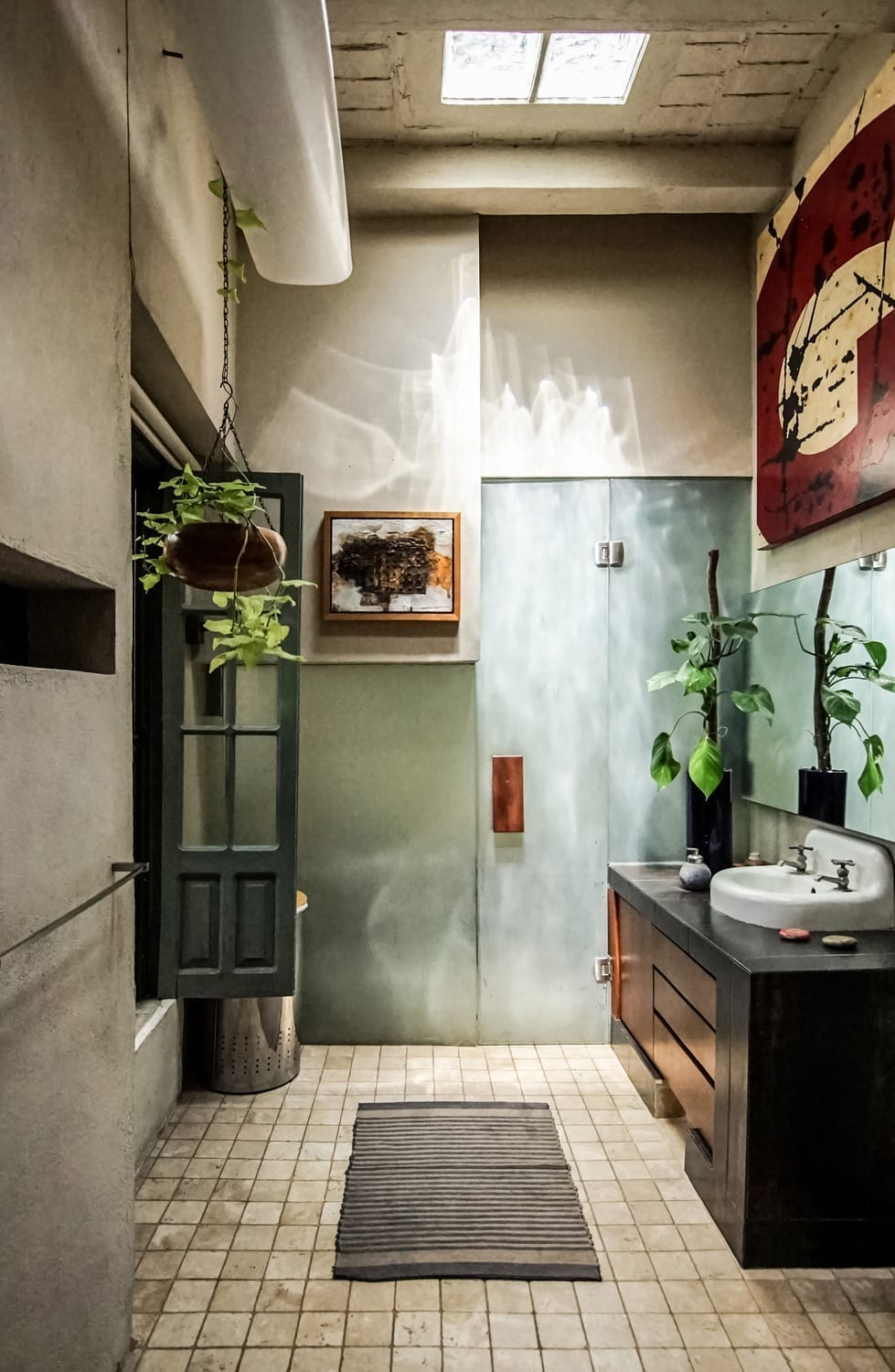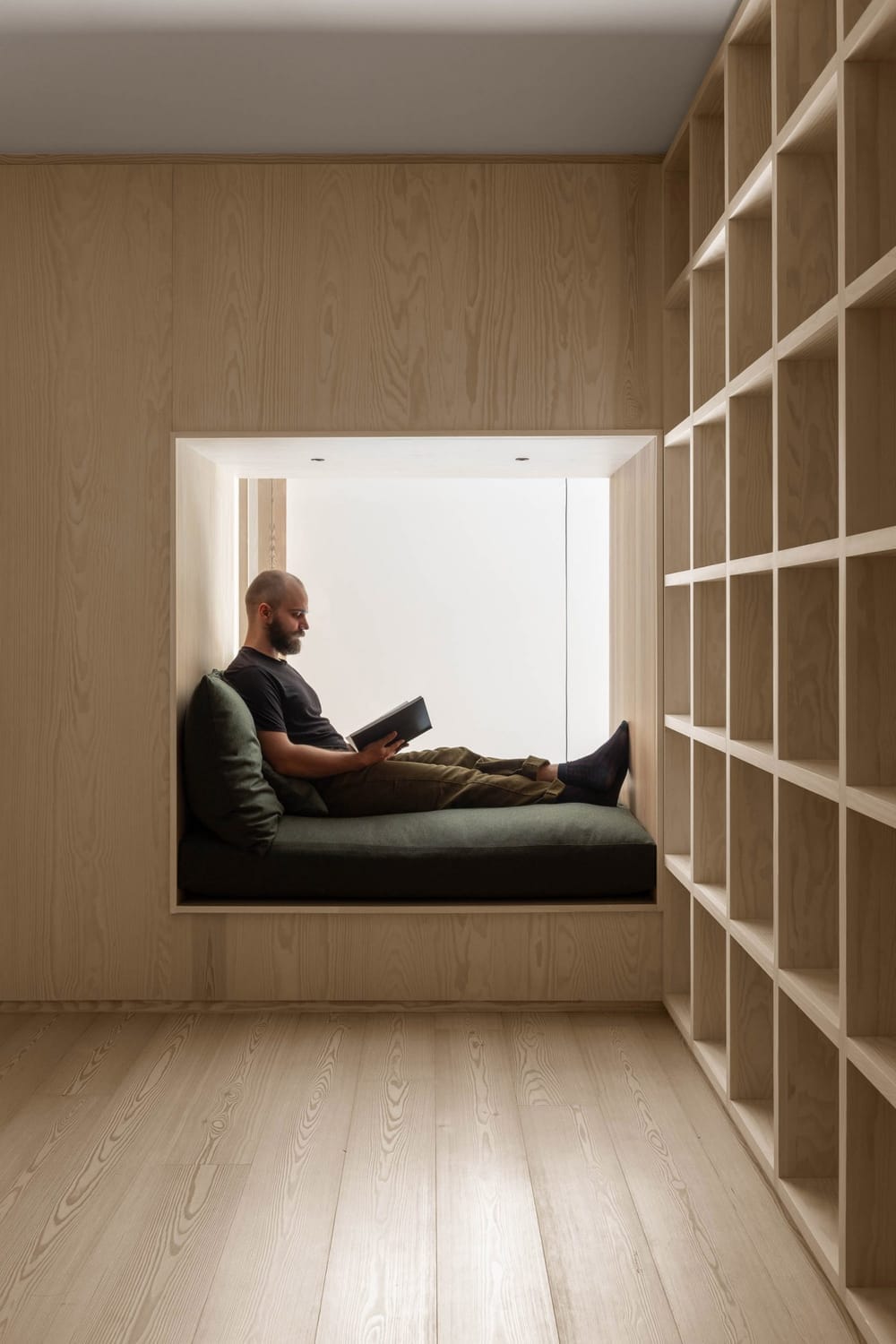

7 Sacred Secrets to Create a Meditation Space That Enhances Inner Peace & Daily Joy

In a world that constantly asks us to move faster, produce more, stay awake for longer and tune out junk light and noise while ignoring the signals from our nervous system, pausing is considered a renegade, out of the ordinary experience.
When women are going through midlife changes, they are not just looking for a bit of peace and quiet, they're after some real sanctuary. Not just a place to sit, but a space that represents who we are and how we are changing as women.
Creating a meditation space is not about achieving a Pinterest-worthy aesthetic or performing calmness. It is about intentionally creating a space for the parts of us that we don't verbally express. It's a place that mirrors our healing, not just our habits.
Here is what I have found to be true time and time again: when your environment becomes a co-regulator for your nervous system, something shifts. Presence doesn't have to be fought for—it is to be found.
In this week's journal entry, we are exploring the seven sacred secrets woven from neuroscience, embodied psychology and lived experience that can help guide the ritual of reclaiming your space.
Let's dive in!
"When you lose touch with inner stillness, you lose touch with yourself… Your innermost sense of self… is inseparable from stillness.”
— Eckhart Tolle
The Invisible Dialogue: How Environment Shapes Your Inner World
For thousands of years, spiritual traditions have honored the sacredness of space. Whether it was a Zen temple or a circle of stones in nature, every detail was intentional—built to support stillness, healing, and connection.
However, in our fast paced, always-on world, finding moments of true peace can feel like a luxury.
Yet, the yearning for inner calm, mental clarity, and emotional balance is more profound than ever. Meditation offers a powerful path to cultivate these states, but often, we overlook a critical element in deepening our practice: the physical space itself.
Today, neuroscience confirms what ancient wisdom always knew: your surroundings directly affect your brain and body. Your environment is in a constant, invisible dialogue with your nervous system. From the subtle hum of a refrigerator to the visual clutter on your desk, every sensory input influences your brain's state.
Research shows clutter increases cortisol levels, chaotic visuals strain cognitive load, and even harsh lighting can keep the stress response subtly engaged.
But when a space is thoughtfully curated, it encourages your brain to ease into alpha and theta states—those dreamy, focused frequencies where deep meditation, healing, and inner clarity unfold.
“If we’re not calm, we can’t listen deeply and understand. But when our mind is calm, we can see reality more clearly, like still water reflecting the trees, the clouds, and the blue sky. Stillness is the foundation of understanding and insight.”
Sacred Secret 1: Anchor Your Space with Intention and Ritual
Creating a meditation space begins with intention. Across cultures, altars, shrines, and sacred sites were created with intention, serving as focal points for devotion and ritual. The act of creating and tending to such a space was itself a meditative practice, imbuing the area with spiritual energy.
Neuroscience backs this up: Neuroscience validates the power of ritual to reduce cognitive load and increase feelings of control and predictability. A consistent, intentional space for meditation creates a powerful cue for your brain, signaling safety and preparing your nervous system for the meditative state.
This repeated positive association can strengthen neural pathways for calm and focus (neuroplasticity in action).
The brain loves rhythm. It thrives on patterns and repetition. Ritual, then, becomes less about performance and more about providing a consistent neurological, emotional and spiritual anchor.
Sacred Secret 2: Embrace Simplicity & Flow
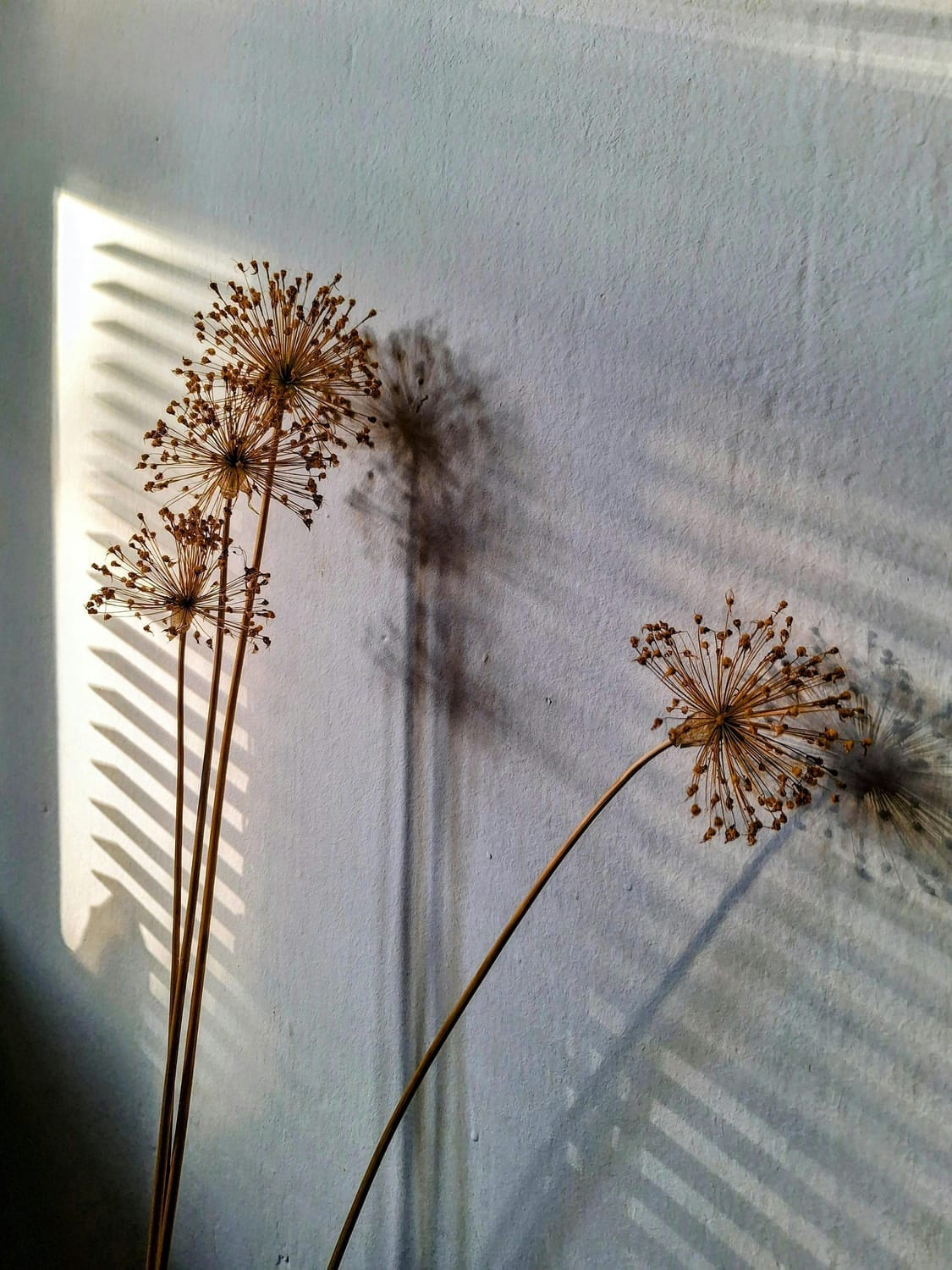
Philosophies like Feng Shui and the minimalist aesthetics of Zen gardens emphasize simplicity, balance, and the harmonious flow of energy (Qi or Chi). They teach that removing clutter and creating clear pathways allows energy to move freely, promoting mental clarity and peace.
This isn't exclusively about being all minimalist and clean. It's about making room: Room for stillness. Room for clarity. Room for what truly matters.
Modern research echoes this. A clutter-free, organised space directly reduces visual noise and cognitive load. Your brain isn't constantly processing extraneous information or unresolved tasks, freeing up mental bandwidth.
This can facilitate a flow state, where attention is fully absorbed in the present moment – a key component of deep meditation.
Ask:
Does this object nourish me or nag me?
Can I breathe here?
Then try this:
Clear your space of items that don’t feel aligned with your purpose.
Choose simple, soothing colours—earthy tones, soft whites, muted greens - or grounding hues of your favourite colour. I wrote about how the hues and saturation of colours greatly influence their tendency to stimulate or calm in my e-guide 5 Design Mistakes That Hurt Your Mental Health
Arrange your cushion or mat so you can sit with ease, without visual distractions.
Create spaces that promote relaxation with neutral tones, natural fibres and open surfaces. Let your room become an oasis of calm.
Sacred Secret 3: Curate a Sensory Sanctuary To Engage Your Inner Calm
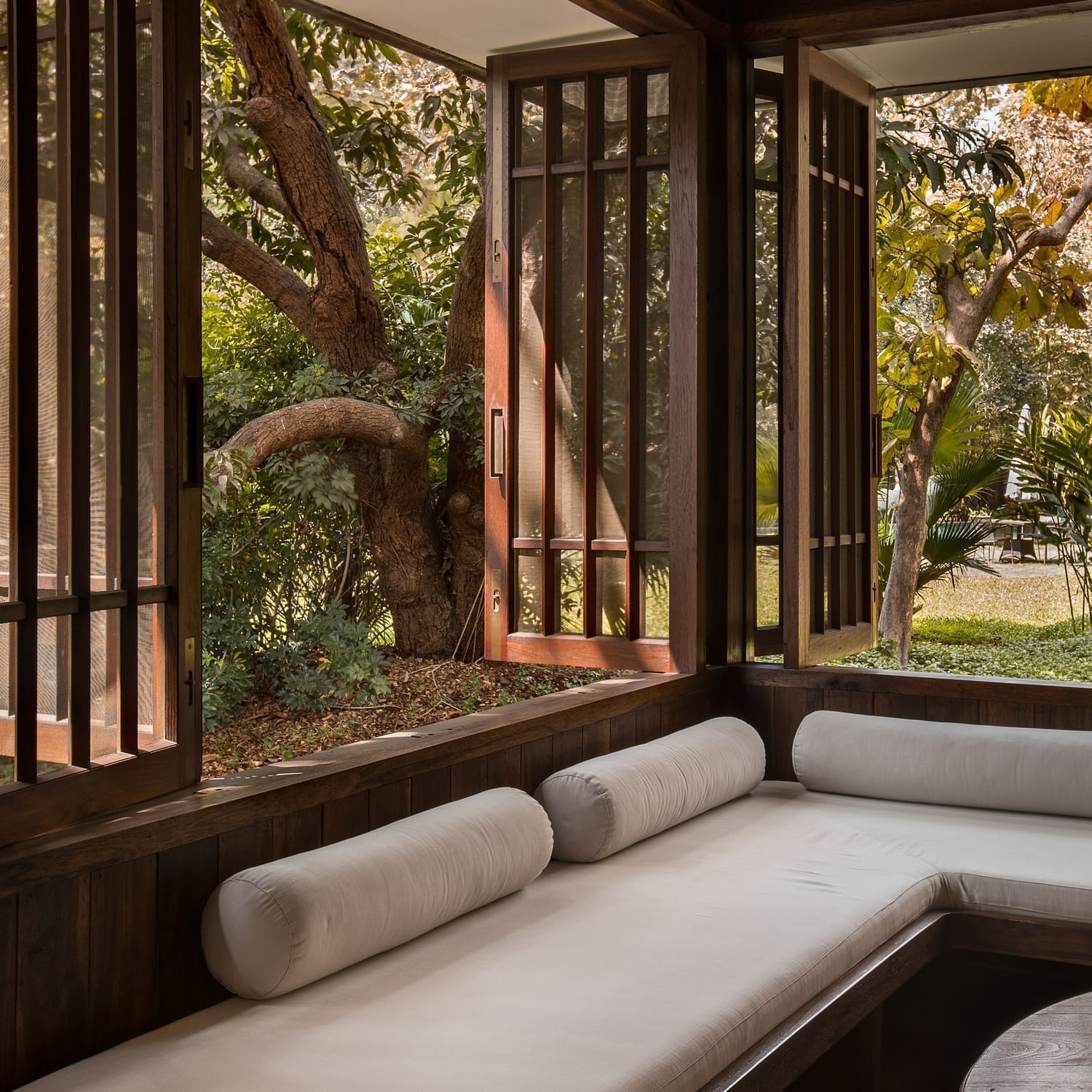
Your senses are direct portals to your nervous system, and your nervous system is always listening.
It doesn't just respond to your thoughts; it also responds to your emotional state.
Cultures have long used specific sensory inputs to induce meditative states – the sound of singing bowls, the scent of frankincense, the warmth of candlelight. They understood that engaging the senses thoughtfully could deepen connection.
Introduce these elements:
Light

Soft, natural light supports melatonin release and tells your brain it’s time to relax.
Use warm-toned bulbs or candles to mimic sunset hues.
Sound

While silence is powerful and sacred, gentle background sound—like ocean waves, Tibetan bowls, or ambient music—can soothe the mind into meditative states.
Explore binaural beats to help entrain brainwaves.
Scent

Use essential oils like Frankincense, Lavender, Rose among others: Scents that bypass logic and go straight to the limbic system—your brain’s emotional center.
Touch
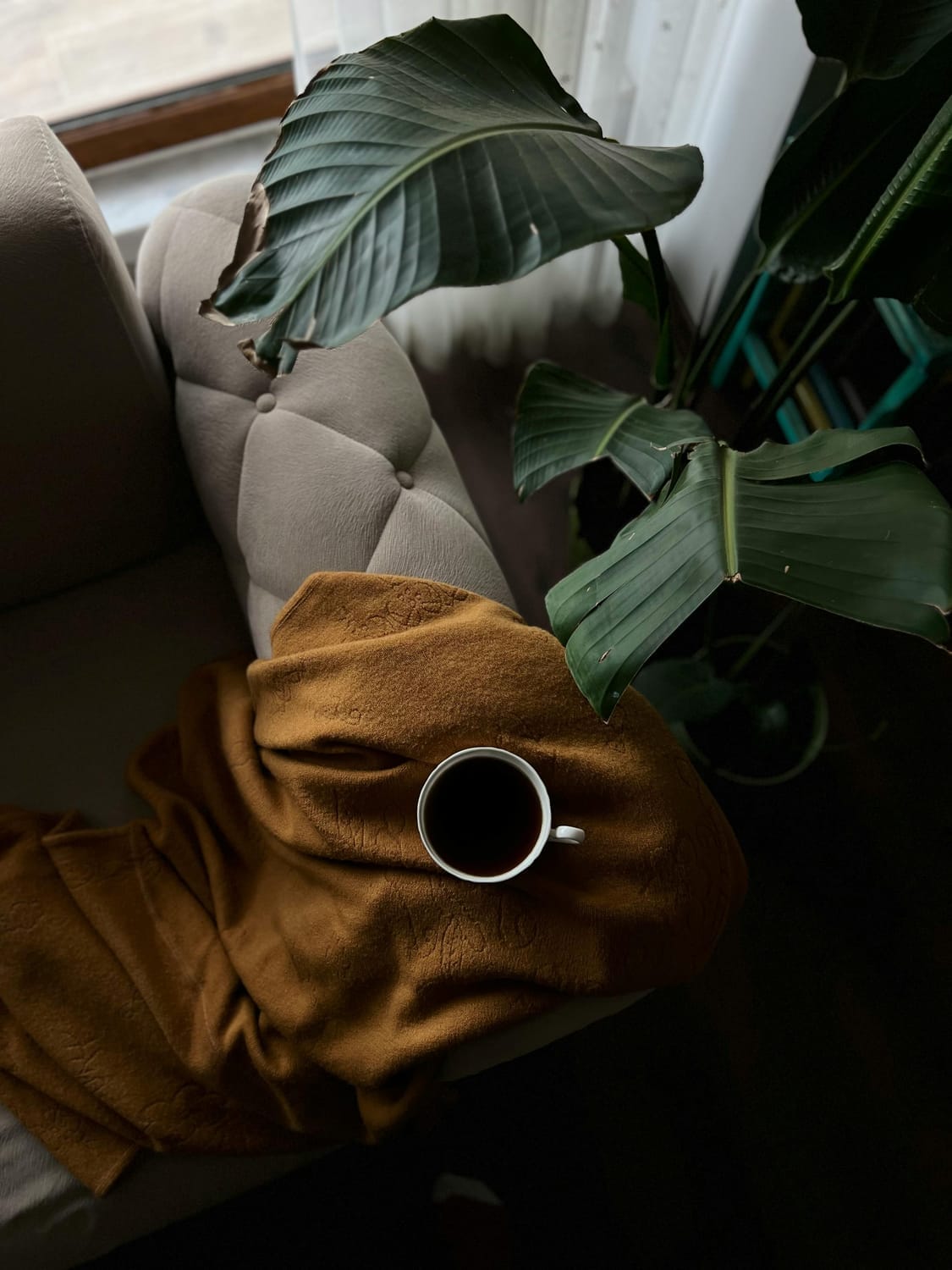
Choose textures that ground and comfort you: a wool mat, a linen cushion, a smooth stone in your palm. Allow your skin to be touched, too.
When all your senses are aligned and in harmony, presence comes more easily.
Sacred Secret 4: Reconnect with Nature’s Wisdom (Biophilia)

Reverence for nature is universal in spiritual traditions. Sacred groves, natural springs, and mountain peaks were considered potent sites for contemplation, reflecting humanity's deep connection to the earth.
Whether it’s a single fern, a wooden statue, or sunlight pouring through a window, biophilic design connects us to something ancient and alive. Research shows natural elements lower heart rate, reduce anxiety, and improve attention.
We are not designed to live in boxes. Our nervous system responds profoundly to natural stimuli such as sunlight, green leaves and wood grain.
Even if you live in a city, a single plant, a view of the sky, or a stone you picked up on a walk can begin the reconnection.
Nature doesn't just decorate your meditation space, it also provides a sense of calm and tranquility that can help you unwind and find your inner peace.
Sacred Secret 5: Claim Your Consistent Corner
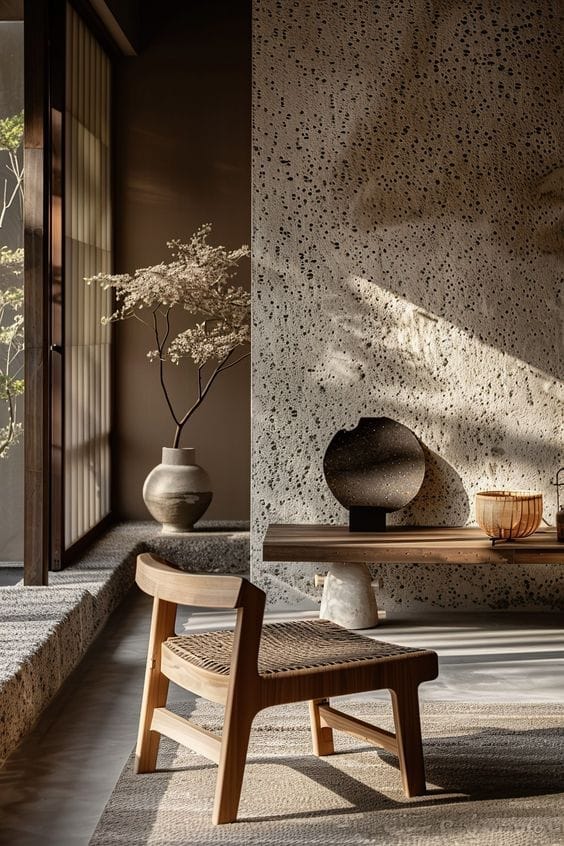
You don't need an entire room. All you need is a designated space: A quiet corner, a shelf or a windowsill will do.
The important thing is consistency — returning to the same spot sends a powerful message to your brain.
Having a consistent place tells your brain that this is where you relax.
Even a chair by the window can become a place of sacred repetition.
Designate it. Honour it. Return to it again and again until your body recognises it as the place where you can truly be yourself.
“Mindfulness isn't difficult, we just need to remember to do it.”
-Sharon Salzberg
Sacred Secret 6: Personalise with Meaningful Touches
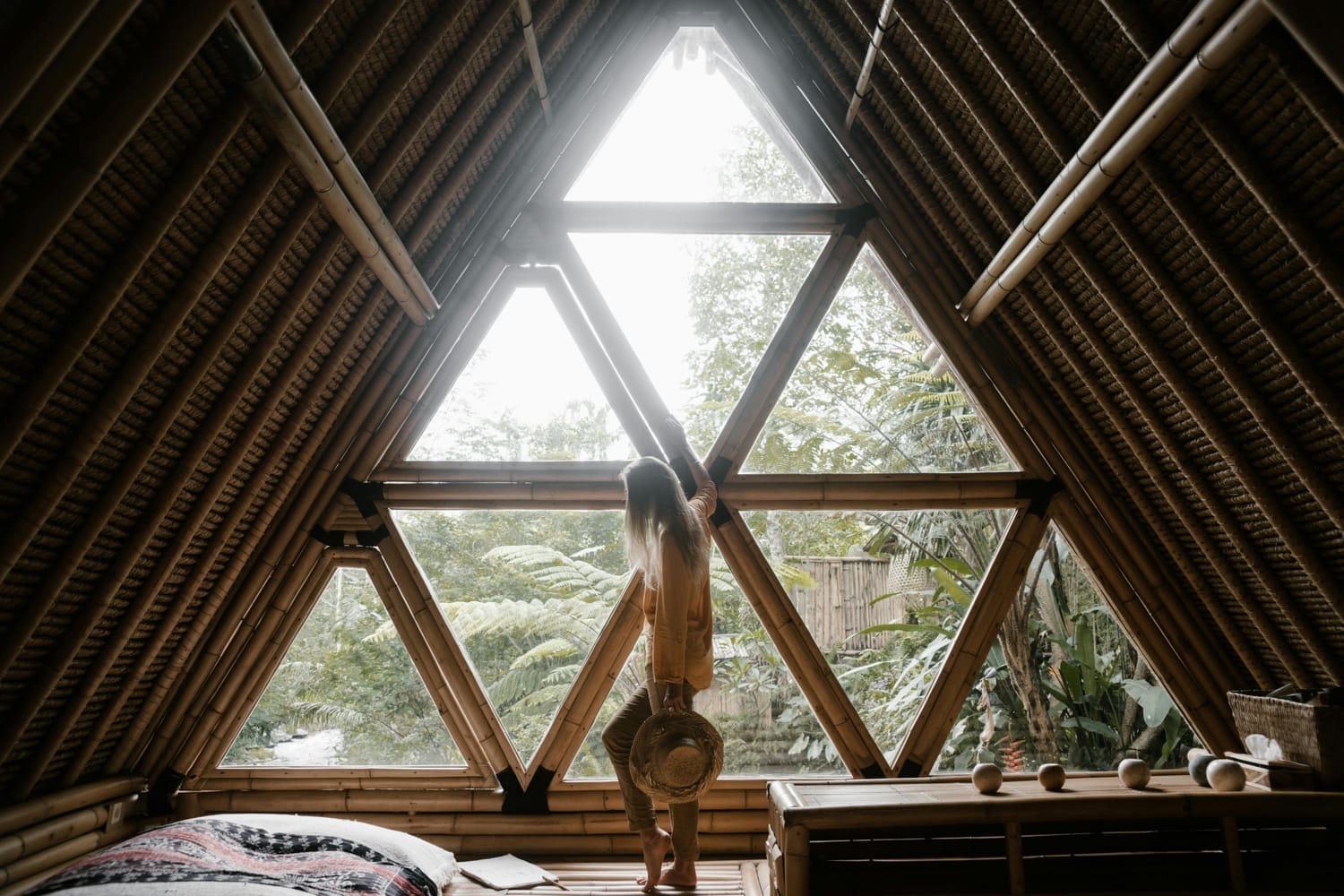
Your meditation space should reflect your spirit and tell your story. A feather you found on a walk. A photo of someone who inspires peace. A journal. A handwritten intention or a mantra on the wall.
These items are not decorations. They are emotional touchstones —symbols of your inner world reminding you of your path, your growth and your quiet power.
Sacred Secret 7: Let Comfort Be Your Guide

Spiritual does not have to mean austere or suffering. Your body is your temple, too. and your meditation space should feel supportive, not restrictive.
Choose cushions that support your spine, blankets that feel good against your skin and chairs that encourage relaxation. When your body is supported, your mind can relax more deeply.
Comfort is not indulgence. It is safety.
Ritual-Space Pairings to Ground the Practice
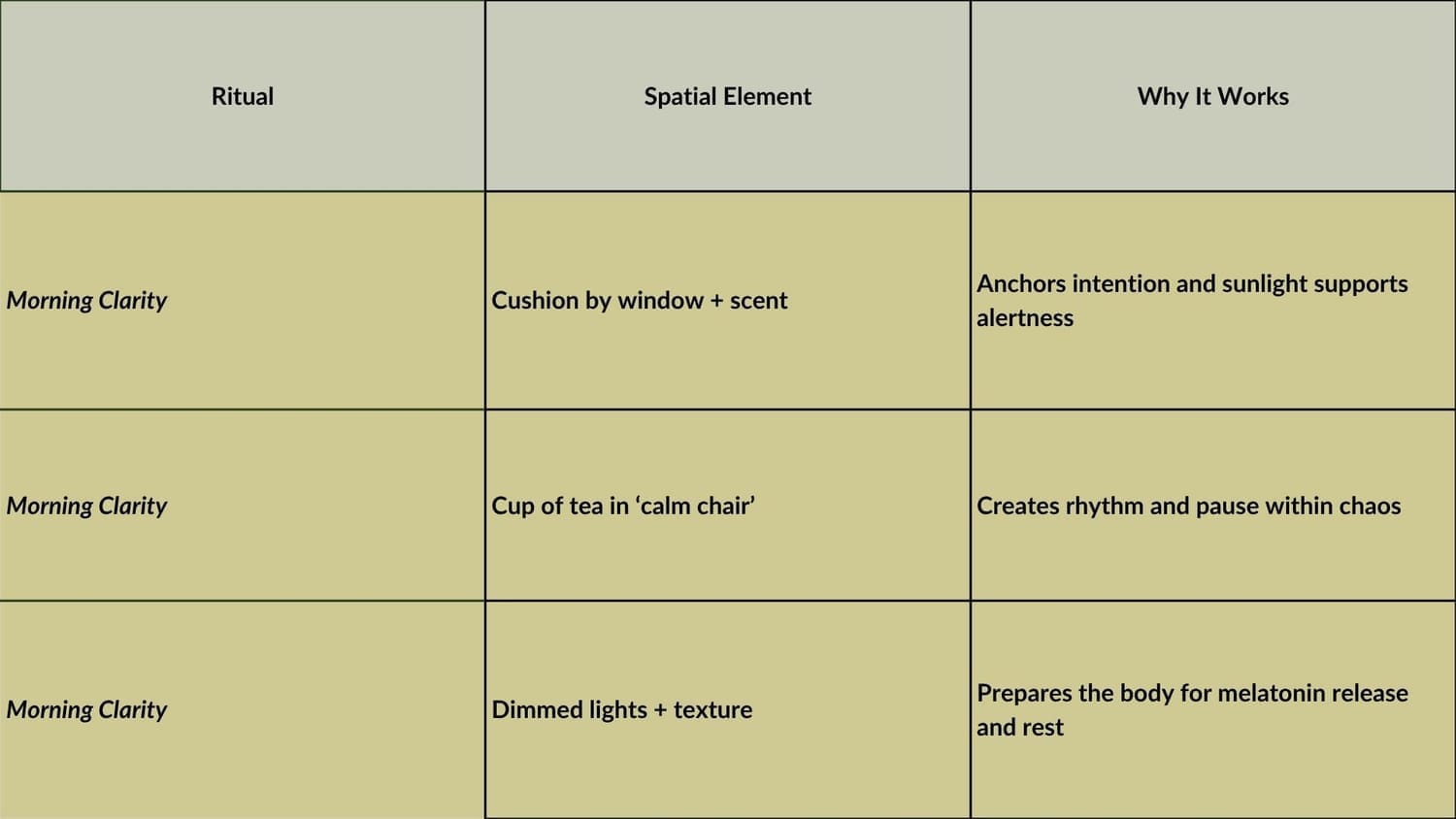
Beyond the Cushion: The Ripple Effect

A sacred space is more than just a place to meditate; creating one is an investment in your well-being. It fosters consistency in your practice, leading to deeper states of meditation, reduced stress, enhanced focus and better emotional regulation.
This sacred space evolves from being merely a place to sit into a personal sanctuary that nourishes your mind, body and spirit, bringing the feeling of inner peace into your daily life.
Over time, it reflects who you are becoming. It reflects your intentions, your breath and your stillness — and eventually, it changes you.
This small corner begins to spill over into how you speak, how you parent, how you walk into a room. It even influences how you respond to life's challenges. That is the real magic.
Ready to Deepen Your Journey?
Creating a meditation space is a spiritual rite of passage. It allows you to become more consistent, compassionate and connected.
While these principles offer a strong starting point, creating a deeply personalised sanctuary requires a strategic, step-by-step approach.
If you are looking for advanced techniques, specific soundproofing recommendations, tailored altar ideas, and a wealth of guided meditation resources to deepen your practice, explore our comprehensive guide, 'Designing Your Personalised Sanctuary: A Step-by-Step Guide to Creating a Meditation Space That Deepens Your Practice' by visiting our e-guides page. Links below.
Take Action Today
If you are ready to translate these insights into tangible changes in your own space, here are a few pathways I offer:
Dive Deeper: For a comprehensive guide with practical, step-by-step strategies grounded in neuropsychology to help you design a truly brain-friendly home, explore my e-guides to learn and implement changes you can begin making in autonomy and at your own pace. Explore the e-guides here.
Join the Reinvention Mastery or Reinvention Essentials 6-month coaching program for women navigating perimenopause and postmenopause, and who want to learn how to use their spaces to support the evolution of their next chapter. The next cycle begins July 1st. Learn more about that here.
Personalised Insight: If you'd like tailored guidance on how the specific dynamics of your home environment are impacting your well-being and receive expert recommendations for change, consider booking a Home Diagnostics Session.
Ongoing Support: For continued learning, gentle accountability, and connection with a community exploring these ideas, you are welcome to join my Community. It is new and we are excited for where it is going.
Frequently Asked Questions
1. Do I need a whole room to create a meditation space?
Not at all. Even a dedicated cushion or shelf in a quiet corner can become a powerful sanctuary if used consistently.
2. What if my space is noisy or shared?
Noise-canceling headphones, soft music, or a small divider can help. Most importantly, your intention is what transforms the space.
3. What are the best colours for a meditation space?
Choose muted, earthy tones and hues —greens, soft browns, whites, or pastels. These colours signal calm and promote mental spaciousness.
4. Can I meditate with my eyes open in my space?
Yes. In some traditions, open-eyed meditation is encouraged. Your space should support whatever practice style resonates with you.
5. What if I feel distracted even in my meditation space?
That’s okay. Return gently to your breath. Your space is there to support you, not pressure you. Distraction is part of the journey.
6. How often should I refresh my space?
Follow your intuition. Sometimes a seasonal shift or a new intention calls for a refresh. Let it be an evolving reflection of your journey.
Want expert help designing a home tailored to your cognitive needs? Book a 1-hour Home Diagnostic Consultation today.
Let’s create a space that enhances your focus, creativity, and mental well-being. Book your1-hour Home Diagnostic Consultation to create a brain friendly and supportive home.
